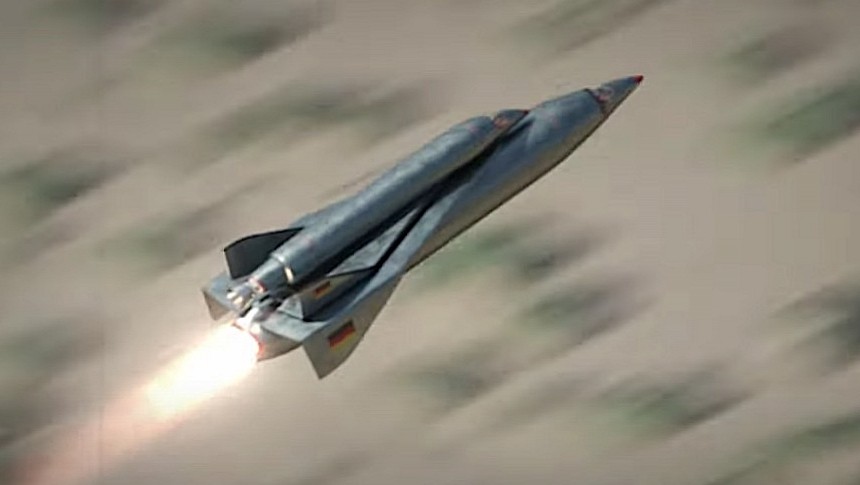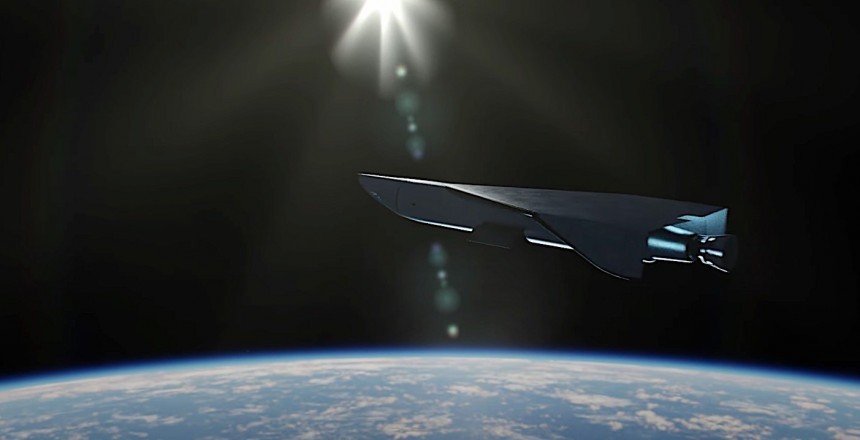The way history unfolded means we humans have specific ideas of how certain things are supposed to work. Cars should have four wheels, motorcycles two, and the best way to shoot a spacecraft off the planet is by means of a vertical take-off rocket.
Recent times however are challenging a lot of those preconceptions, and nowhere is that more obvious than in the space exploration industry. We've now got spacecraft launching under the underbelly of carrier aircraft, rocket boosters that land themselves after they're done, and even civilians flying up there for kicks.
All these things seem new to us, but in all actuality they all have been first dreamed back in the early years of exploration. All these incredible advancements we see now are the fruits of ideas planted long ago, that for reasons that no longer matter never came to be.
One of the early space exploration ideas that was never fully realized is that of a sled-launched spacecraft. That would have required a carrier vehicle placed on rails (or maybe maglev) and strapped to some sort of rocket engine. It would carry whatever spacecraft needed to reach space, accelerating it to high enough speeds for it to be able to escape the planet's gravity.
Such an approach has several advantages, the most important of them being the fact it would have allowed the spacecraft to carry a lot less fuel with it, and a lot more cargo (or people). One of the biggest downsides, though, is that it would have required miles upon miles of track for the sled to be able to accelerate, and in some cases even launch ramps.
Just think about the Hyperion we discussed at the beginning of the year. The brainchild of perhaps one of the most prolific American rocket engineers, Philip Bono, the spacecraft was supposed to be launched by means of a subsonic sled that moved over a cushion of air formed inside a rail beneath.
The rail would have been 1.8 miles long (3 km), but more than half of it would have been pinned against a mountain cliff at least one mile (1.7 km) high that acted like a ramp. At the time of its separation from the rail, the spacecraft would have traveled at 684 mph (1,100 kph).
Another great example of a sled-launched spacecraft is the Junkers Saenger, a two-stage orbital spaceplane that can trace its roots all the way back to the 1940s, way before the public at large became aware space exploration was a thing.
The concept was initially envisioned by German Junkers rocket scientist Eugen Sanger as a rocket military aircraft capable of reaching speeds of 10,000 mph (17,000 kph) and able to hit the east coast of the U.S.
In this form it was never realized, but the idea was picked up in the 1960s by Messerschmitt-Bölkow-Blohm (MBB) and transformed into a study for a passenger airliner. It was also on the verge of becoming the backbone of West Germany's hypersonic program, being studied as a possible launch platform to low-Earth orbit.
The project went quite far, and it was even presented before the European Space Agency (ESA). The organization did not have neither the money nor the desire to fund the project, but the German government however did, and the Saenger was supposed to run as a demo sometime by the end of the 1990s.
At about the same time though the Ariane rockets came into focus, and interest in the German project died down. As a result, the entire Sanger program was canceled in 1994.
One of the many designs studied during project's long life was the Sanger I, a contraption in some sense similar to the American Space Shuttle of later years, at least in terms of how it was supposed to operate in space and during landing. As far as take-off was concerned, things were quite different though.
In this configuration, the spaceplane would have taken off after being accelerated on a 1.8-mile (3 km) rail, just like in the case of the Hyperion, minus the mountain that acted like a ramp. The first stage, powered by three airbreathing engines, would have carried the plane to an altitude of 19 miles (30 km), from where the single-engine second stage would pick things up.
The Saenger was envisioned to fly either with a crew of two astronauts or with cargo, but it never did, and it probably never will. That means, naturally, we have no way of knowing how it would have looked in action other than turning to computer animations.
Space CGI specialist Hazegrayart did just that this week, and we can now enjoy the Junkers Saenger concept doing its thing for the first time (check out the video below). For some, it might seem like a ridiculous way to launch a spacecraft, while for others it could be the best idea ever. You be the judge.
All these things seem new to us, but in all actuality they all have been first dreamed back in the early years of exploration. All these incredible advancements we see now are the fruits of ideas planted long ago, that for reasons that no longer matter never came to be.
One of the early space exploration ideas that was never fully realized is that of a sled-launched spacecraft. That would have required a carrier vehicle placed on rails (or maybe maglev) and strapped to some sort of rocket engine. It would carry whatever spacecraft needed to reach space, accelerating it to high enough speeds for it to be able to escape the planet's gravity.
Such an approach has several advantages, the most important of them being the fact it would have allowed the spacecraft to carry a lot less fuel with it, and a lot more cargo (or people). One of the biggest downsides, though, is that it would have required miles upon miles of track for the sled to be able to accelerate, and in some cases even launch ramps.
Just think about the Hyperion we discussed at the beginning of the year. The brainchild of perhaps one of the most prolific American rocket engineers, Philip Bono, the spacecraft was supposed to be launched by means of a subsonic sled that moved over a cushion of air formed inside a rail beneath.
The rail would have been 1.8 miles long (3 km), but more than half of it would have been pinned against a mountain cliff at least one mile (1.7 km) high that acted like a ramp. At the time of its separation from the rail, the spacecraft would have traveled at 684 mph (1,100 kph).
The concept was initially envisioned by German Junkers rocket scientist Eugen Sanger as a rocket military aircraft capable of reaching speeds of 10,000 mph (17,000 kph) and able to hit the east coast of the U.S.
In this form it was never realized, but the idea was picked up in the 1960s by Messerschmitt-Bölkow-Blohm (MBB) and transformed into a study for a passenger airliner. It was also on the verge of becoming the backbone of West Germany's hypersonic program, being studied as a possible launch platform to low-Earth orbit.
The project went quite far, and it was even presented before the European Space Agency (ESA). The organization did not have neither the money nor the desire to fund the project, but the German government however did, and the Saenger was supposed to run as a demo sometime by the end of the 1990s.
At about the same time though the Ariane rockets came into focus, and interest in the German project died down. As a result, the entire Sanger program was canceled in 1994.
One of the many designs studied during project's long life was the Sanger I, a contraption in some sense similar to the American Space Shuttle of later years, at least in terms of how it was supposed to operate in space and during landing. As far as take-off was concerned, things were quite different though.
The Saenger was envisioned to fly either with a crew of two astronauts or with cargo, but it never did, and it probably never will. That means, naturally, we have no way of knowing how it would have looked in action other than turning to computer animations.
Space CGI specialist Hazegrayart did just that this week, and we can now enjoy the Junkers Saenger concept doing its thing for the first time (check out the video below). For some, it might seem like a ridiculous way to launch a spacecraft, while for others it could be the best idea ever. You be the judge.













